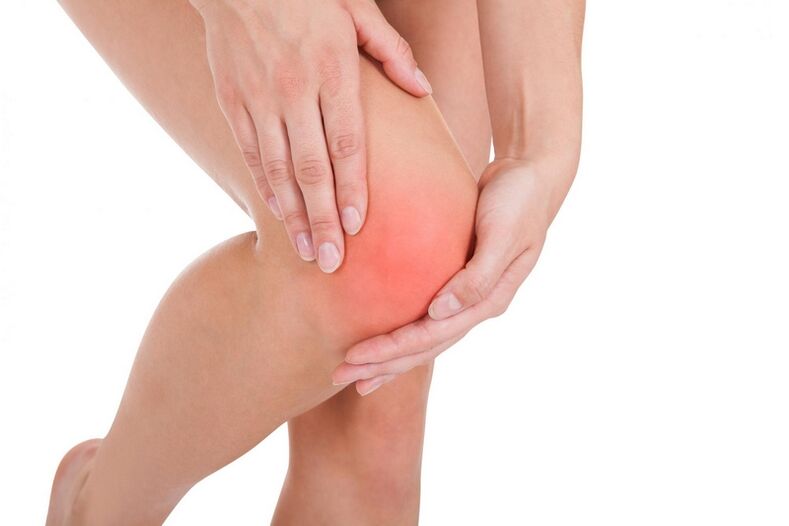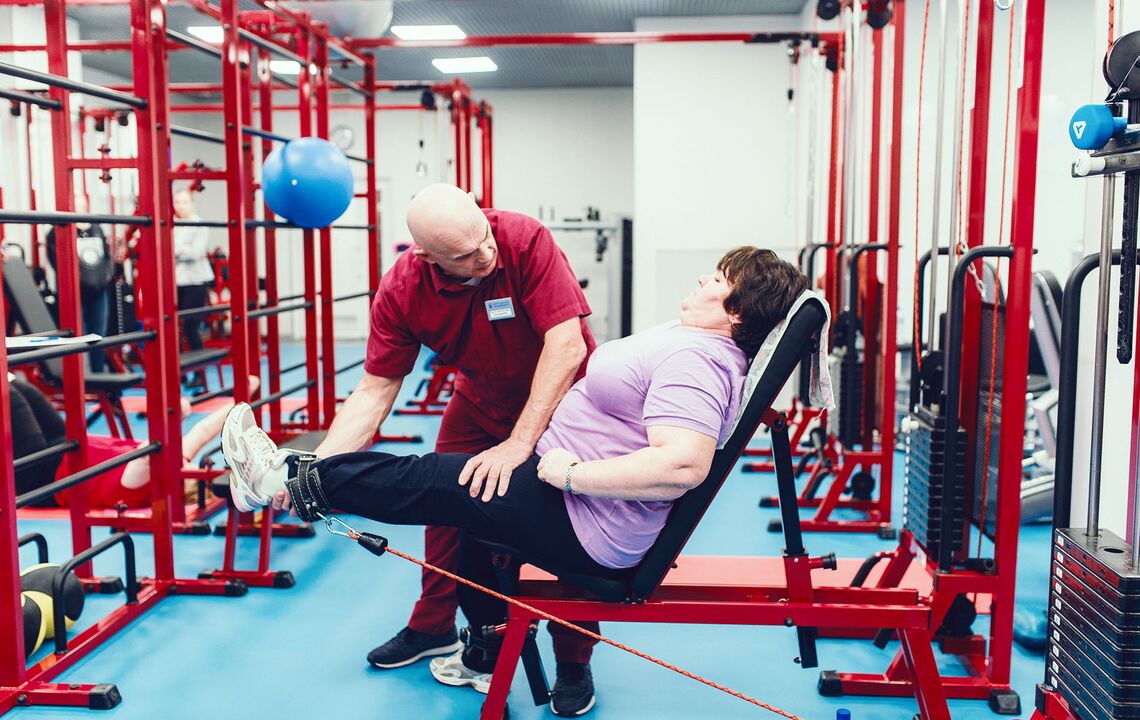Knee joint osteoarthritis is one of the most common diseases of the muscular system and, unfortunately, the most common cause of loss of mobility, disability and sometimes disability.With arthrosis, the cartilage that lines the articular surface is irreversibly affected, causing the knot to stop working properly and cause pain.
Officially, the disease is called "deformity of osteoarthritis";Another name is gonarthrosis (from ancient "Goni" - knee).Knee ties are the largest joints in the human body and are most affected by osteoarthritis.Much less often, the disease affects the hip and ankle joints.
How does gonarthrosis happen?
Normally, the healthy cartilage is resilient and smooth, it completely covers the bone moves and allows them to slide.Cartilage also softens the stress that bones take when walking or practicing.

When the cartilage is destroyed (thus manifests arthrosis), the upper layer of this elastic tissue becomes thinner.Sometimes delaminates cartilage, tears appear - this is how the union loses the "absorbent" and "holding" its main.The bones begin to rub against each other, the joints swell, gradually losing its normal appearance and the pain appears.
Causes of gonarthrosis and risk factors
Osteoarthritis deformities are more common in older women, overweight, but that does not mean that young and physically active people do not suffer from this pathology.Sometimes the development of the disease is provoked by severe physical work or excessive stress in the gym.
Here it is far from the full list of the arthrosis of the knee joint:
- Sports injuries - meniscus injuries, fractures and displacement;
- inflammatory processes in the joints and concomitant diseases;
- Disordishes metabolic disorders - some diseases lead to the formation of intra -articular deposits;
- excessive stress in the joint, including prolonged stay or physical work associated with severe elevation;
- Uneven load on the joints due to leg bending - arthrosis manifests more rapidly in overloaded areas.
Much depends on the genes - a person may have a hereditary predisposition to the arthrosis of the knee joints.In such people, finding responsible for the development and stability of cartilage tissue is interrupted.
There are several factors that increase the risk of gonartrosis:
- Increased body weight.Due to the increasing load on the joint, the cartilage tissue wears faster;
- Age over 40 years.Most people of this era have reduced physical activity.Due to physical inactivity, muscle atrophy, weak muscle tissue does not properly supply the joints, and the risk of cartilage damage increases.
Symptoms of arthrosis
The knee joint osteoarthritis is not a disease that can occur suddenly.It makes yourself well known in advance: it all starts with a slight knee pain when walking.The pain can increase if you have to go up or down the stairs.As a rule, the knee hurts at the beginning of the movement, then the pain disappears and returns with prolonged load on the joint.
If you ignore these symptoms and do not consult a doctor about them, the disease will begin to progress.Then the pain will change from the ongoing passage, the knee will begin to hurt more even at rest, and swell.As the cartilage rate deteriorates, the mobility of the entire union will be limited.
Some people notice that the knee "reacts" to the weather changes.It really happens - nerve endings in the joint capsule are susceptible to changes in atmospheric pressure.
The following symptoms are characteristic of gonarthrosis:
- knee pain when moving and walking;
- Breakfast stiffness at the knee joint, when the movement range is minimal;
- knee swelling;
- Dry and rough sound of the compression when moving - this sound occurs due to the rubbing of the articular surfaces.
As the disease progresses, the symptoms will change:
- The pain will even bother you at rest;
- The union becomes deformed and loses its functions;
- Because of the knee deformity, the walking will change.
degree
There are 3 stages of the development of the arthrosis of the knee joint.
First degreeDisease - almost asymptomatic.It starts with the first manifestations of the disease - almost painless, for example, the fatigue in the foot - and lasts until the first bone deformities appear.If the knee has changed its shape due to synovitis - that is, due to the accumulation of fluid in the joint, but the intra -articular cartilage is not damaged, the disease is still in phase 1.

Second rankIt is characterized by progressive changes in bone tissue.From the outside, the knee can look the same as in stage 1 - deformed and increased in size.Pain increases: In addition to the inlet pain that occurs during movement, crepeus (pressure) is added to the affected knee.The connection becomes less mobile, it becomes difficult to collect and walk on uneven surfaces.
Rank of 3rdThe rate of gonartrosis is more painful.At this stage, there is almost no cartilage tissue, and if the disease is severe, the bones can grow together.Then the union becomes fully immobilized, and the person must only move with the help of a crutch or stick.Usually at this point doctors make a verdict about the endoprosthetics of the damaged union.
Important: only a doctor can determine the exact degree of development of the disease.Sometimes, with mild symptoms, the disease seriously affects the cartilage membrane - therefore, for an accurate diagnosis, additional studies are usually performed:
- Radiography - to see if the cartilage surfaces are deformed and in what condition is the joint space;
- CT or MRI - for more detailed studies.
How is gonartrosis diagnosed and treated?
The first thing to remember is that timely diagnosis and early treatment will help stop the disease at first.Therefore, the appearance of the first disturbance at the knee joint is a good reason to visit a doctor and undergo an examination.
Doctors make a diagnosis of osteoarthritis based not only on medical history, complaints and the current condition of the knee joint.The results of additional studies also play an important role - they are often described to clarify the stage of gonarthrosis and the severity of the disease.
To accurately diagnose knee joint arthrosis, doctors usually prescribe:
- Radiography.If pathological processes have begun in the knee - for example, deposits of calcium crystals or bone tumors have appeared in the joint capsule - these changes will be visible in the photographs.Doctors most often prescribe X -ray examinations, but without a thorough examination of the knee joint, its mobility and the condition of the muscles that support it, photography is incomplete;
- Ultrasound - can be used to assess the condition of the soft tissue surrounding and lining the node.Ultrasound meets the results of the radiography so that the doctor can see changes not only in bone structures but also in tissues;
- MRI - magnetic resonance imaging.An MRI is prescribed for knee pain complaints if the doctor suspects damage to the meniscus, ligaments or tendons;
- Arthroscopy is an invasive examination in which the joint cavity is examined internally using a camera.The cameras are inserted through small cuts on the skin;Through these same incisions, doctors can perform small manipulations - for example, remove part of the destroyed cartilage, partially calm from inequality in cartilage tissue, etc.
The treatment of arthrosis is usually performed with medication, trying first of all to relieve pain, improve joint mobility, and restore the ability to move.Arthrosis causes irreversible changes in cartilage tissue - therefore, it is impossible to talk about a full cure.But it is possible to stop the progression of the disease - and thus slow down further tissue destruction.
This is what the standard treatment for gonarthrosis looks like:
- Local remedies - patches, creams, ointments and gel;
- painkillers;
- Anti-inflammatory drugs, especially non-steroidal ones.Their use is considered the "golden standard" of medicine, but such medicines destroy the gastric mucosa;
- blockade and chondroprotectors - medication whose effect occurs only after a long course of use;
- Rarely - physiotherapy and treatment of sanatorium.
There are recommendations for wearing orthopedic knee pads to support the joint and reduce the pain.But all the methods listed above are the methods of passive impact on the operation of the joint.
This treatment relieves only a few symptoms - neutralizes pain, inhibits inflammatory processes, etc.The disease itself continues to progress, gradually destroying the node.In the final stages of osteoarthritis, a person loses not only the ability to work but also the ability to move.In such cases, the knot should be of prosthesis - that is, an artificial structure should be inserted into the knee.Such surgical intervention does not pass without a trace and imposes its limitations - and therefore reduces the quality of life.
The methods of active impact on the joint have a completely different effect, when, using the body's own sources, the tone of the muscles that supply the joint with blood and nutrients is restored.Such treatment is more effective if performed under the supervision of qualified and experienced doctors.
Treatment of gonartrosis with kine or
Kinetherapy, ie, movement therapy, activates its own body forces.Correctly selected load allows you to work effectively with the necessary muscles and, by strengthening the muscles, improve the condition of the joints and cartilage.
Treatment with kineets or begins with a thorough examination and, necessarily, myofascial testing.A kinetherapist examines the condition of a sore knee, analyzes the condition of muscle tissue, tendons and ligaments.Considering data from ultrasound, CT, MRI and radiography, the degree of gonartrosis is determined and a program of therapeutic exercises is designed.
The classes are performed in a multifunctional imitator - a mimic of the owner with a special design.Exercises are performed in a way to avoid excessive stress in the joint and work only on those muscles that need to be strengthened and developed.In the initial stages, patients are prescribed joint gymnastics in the soil - consists of exercises in a weight -free mat.
The therapeutic effect of kina is either ensured by restoring blood microcirulation and improved lymphatic drainage.The jump gets more food, the development of arthrosis slows down to a full stop, and the articular node biomechanics is completely reset.
Such a serious disease as arthrosis of the knee joints cannot be ignored.The best way to prevent it is to direct a healthy lifestyle: a balanced diet, physical activity.But if problems with joints have already begun, you should not expect serious warning signs - in the first symptoms you should seek help from qualified doctors.


























